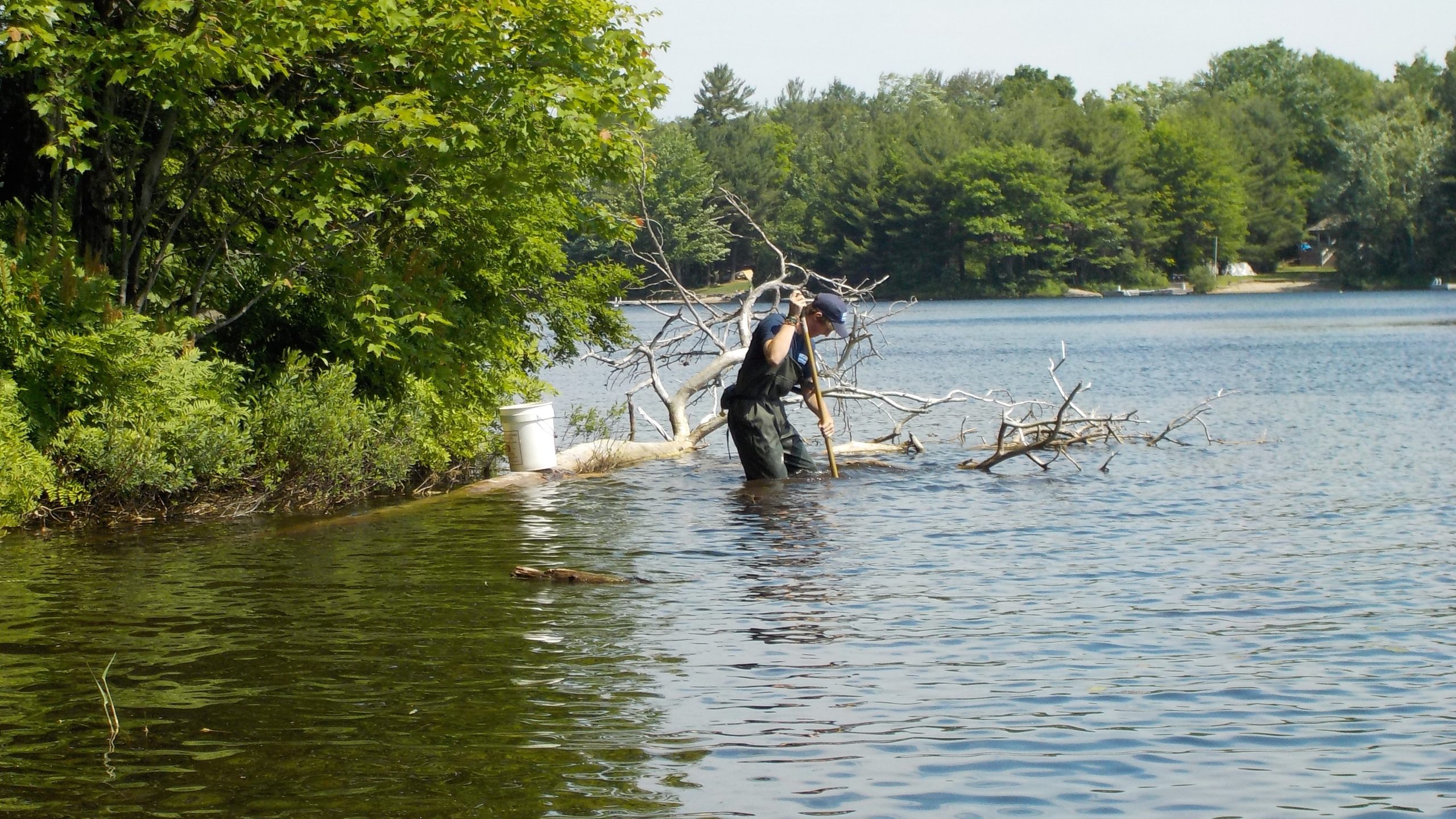What are the bugs in the mud of Muskoka area lakes telling us?
By Rachel Plewes.

In Muskoka, lake monitoring is done to answer two questions: 1) Is the lake healthy, and 2) If not, why? Biological monitoring of benthos (bottom-dwelling organisms) can complement monitoring of physical or chemical attributes of the water. In effect, the larval invertebrates that live on and in the sediments can tell us things about the quality of their habitat.
The types of organisms present in benthic invertebrate communities can be used to assess the biological health and integrity of a lake or river ecosystem because these organisms vary in their tolerance to stressors like local chemical pollution or physical stressors like siltation. Sensitive benthos species, such as mayflies, dragonflies and caddis flies, are intolerant to ecosystem disturbances that result in poor water quality or habitat alteration. These species primarily inhabit sediments of lakes during their lengthy larval and nymph stages, serving as an important food source for fish. Monitoring the percentage of mayflies, dragonflies and caddis flies serves as a valuable biological indicator, with a higher abundance indicating a healthy lake. Conversely, in lake ecosystems with poor water quality or degraded aquatic habitats, the percentage of sensitive benthos will decrease.
The collection of benthos samples is the focus of the biological monitoring program run by District of Muskoka because it helps identify lakes that are possibly being negatively affected by such stressors. The Muskoka Watershed Council’s 2023 Muskoka Watershed Report Card examined the data that had been collected since 2012. We used the percentage of all mayflies, dragonflies, and caddis flies in samples as an indicator of lake health — studies done in Europe showed that when less than 9.8% of organisms belonged to these three groups, the lakes showed signs of degradation and compromised ecological condition. We found that 12 of the 37 lakes with adequate benthos samples (32%) were of potential concern because they had less than 9.8% of sensitive benthos. The other 25 lakes were deemed not of concern. For six additional lakes, too few samples (fewer than three since 2012) had been collected to accurately assess condition.
Most of the 12 lakes of potential concern have high levels of habitat alteration caused by shoreline modifications (e.g. docks) and nearshore development. Nearshore development and shoreline modifications can degrade aquatic habitat by increasing shoreline erosion and removing habitat features such as logs, rocks, trees and vegetation. Barron’s Lake was the sole lake with a high percentage of natural shoreline that was of potential concern, but other stressors exist in that lake. Runoff from road salt applied to Highway 400 has increased the chloride concentration of Barron’s Lake to 50 milligrams per litre, degrading its water quality to the point where that may influence its benthic community.
Continued biomonitoring is crucial to help identify lakes that are being negatively impacted by human and natural stressors. The percentage of sensitive benthos can be used as a screening tool to identify lakes that need restoration or management efforts. However, a higher sampling intensity and the sampling of more lakes in Muskoka are needed for better lake assessment. Volunteers have provided valuable support to the biological monitoring program by collecting samples. District staff are available to work with lake associations and other community organizations to collect benthic data by providing expertise and equipment, while the association provides volunteers. Learn more about the biological monitoring program here.

This is the 10th in a series of articles from the Muskoka Watershed Council on “The State of Our Watershed” on MuskokaRegion.com. Each explores environmental issues and management challenges revealed in our 2023 Muskoka Watershed Report Card. This week’s contributor is Rachel Plewes, a biologist based in Kelowna, B.C.
